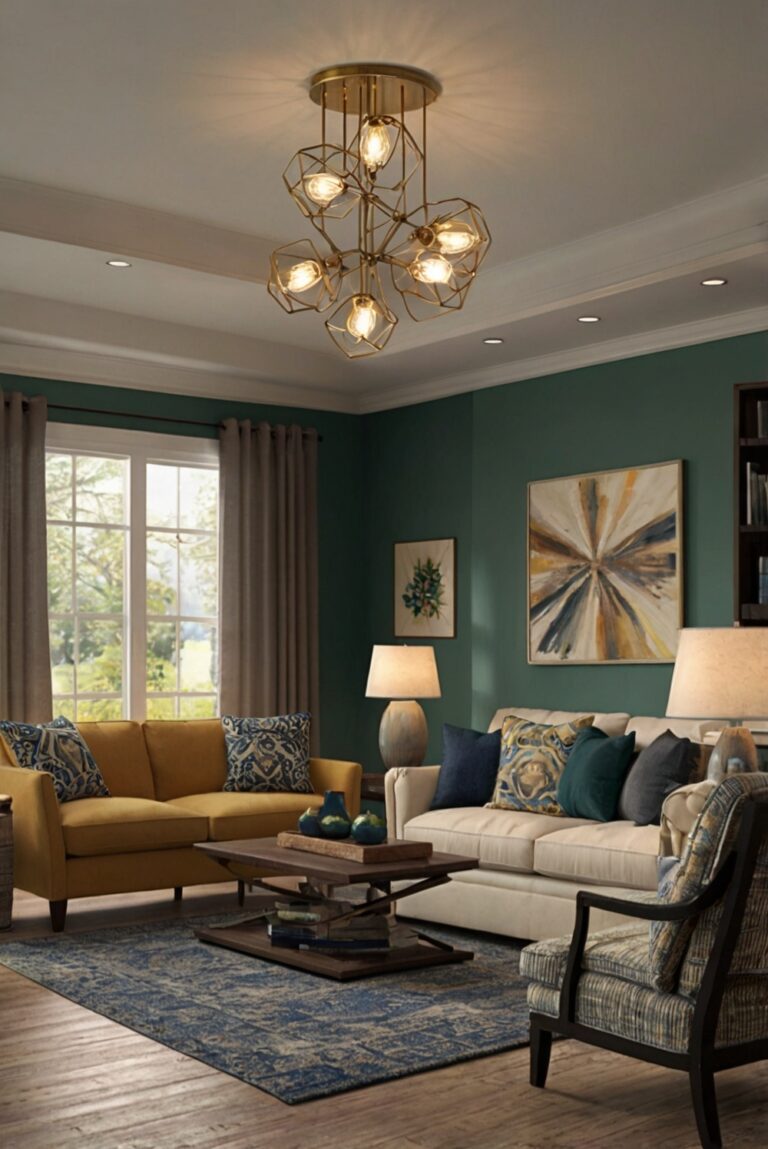Create a captivating focal point in your living room by mastering the art of lighting. Explore daily interior designer routines and decor ideas to enhance your space.
**
How can you use lighting to create a focal point in your living room?
**
**
Answer:
**
Lighting plays a crucial role in home decorating and interior design, especially in creating a focal point in the living room. To enhance the ambiance and draw attention to a specific area, consider the following tips:
1. **Choose the Right Light Fixtures:** Opt for statement lighting fixtures that match the style of your living room.
2. **Use Accent Lighting:** Highlight focal points like artwork or architectural features with accent lighting.
3. **Layer Lighting:** Combine ambient, task, and accent lighting to create depth and dimension.
4. **Color Temperature:** Select warm or cool light depending on the mood you want to create.
5. **Dimmer Switches:** Install dimmer switches for flexibility in lighting intensity.
6. **Natural Light:** Utilize natural light by positioning furniture strategically.
7. **Avoid Glare:** Position lights carefully to prevent glare and shadows.
By incorporating these lighting techniques, you can transform your living room into a stunning space that captures attention and enhances the overall aesthetics of your home.
– [X] home decorating
– [X] home interior
– [X] home interior design
– [X] home decor interior design
– [X] space planning
– [X] interior design space planning
– [X] decorating interiors
– [X] interior bedroom design
– [X] designers kitchen
– [X] kitchen designs
– [X] living room interior
– [X] designer wall paint
– [X] primer paint for walls
– [X] color matching painting
– [X] paint color match
– [X] home paint colors
Highlighting Important Areas:
Lighting can be used to create a focal point in your living room by highlighting important areas such as artwork, sculptures, or architectural features. By strategically placing lights above or around these key elements, you can draw attention to them and make them stand out in the room.
Adding Depth and Dimension:
Another way to use lighting as a focal point is by creating depth and dimension in the space. By using a mix of overhead lighting, floor lamps, and table lamps, you can create layers of light that add visual interest and make the room feel more dynamic.
Setting the Mood:
Lighting can also be used to set the mood in your living room. By incorporating dimmer switches or adjustable fixtures, you can easily change the ambiance of the room from bright and energetic to soft and cozy. This versatility allows you to customize the lighting to suit different activities or times of day.
Choosing the Right Fixtures:
When using lighting to create a focal point in your living room, it’s important to choose the right fixtures. Consider the style of your space and the mood you want to create when selecting lights. Chandeliers, pendant lights, and track lighting can all be effective choices for drawing the eye to a specific area.
Layering Different Types of Lighting:
To create a focal point with lighting, it’s also important to layer different types of lighting. Combine ambient lighting (such as overhead fixtures) with task lighting (such as reading lamps) and accent lighting (such as wall sconces) to create a well-rounded lighting scheme that highlights your focal point.
1. What types of lighting can be used to create a focal point in the living room?
To create a focal point in your living room, you can use a variety of lighting options such as chandeliers, pendant lights, wall sconces, floor lamps, and table lamps. Each type of lighting can be strategically placed to draw attention to a specific area or object in the room. For example, a chandelier can be hung above a coffee table to highlight it as a focal point, while wall sconces can be used to accentuate a piece of artwork.
2. How can you use lighting to highlight artwork or decor in your living room?
To highlight artwork or decor in your living room, you can use accent lighting such as track lights, picture lights, or adjustable wall-mounted fixtures. These types of lighting can be positioned to shine directly on the artwork or decor, creating a focal point and drawing attention to the piece. Additionally, using dimmable lights can allow you to adjust the intensity of the light to suit the mood or time of day.
3. What are some tips for using lighting to create a cozy atmosphere in the living room?
To create a cozy atmosphere in your living room, you can use warm, soft lighting such as dimmable floor lamps, table lamps with fabric shades, or string lights. These types of lighting fixtures can help to create a warm and inviting ambiance in the room. Additionally, using multiple light sources at different heights can add depth and dimension to the space, making it feel more cozy and comfortable.
4. How can you use lighting to define different areas within an open-concept living room?
In an open-concept living room, lighting can be used to define different areas and create separate zones for different activities. For example, you can use a pendant light or chandelier to define the dining area, while floor lamps or table lamps can be used to define the seating area. By strategically placing lighting fixtures in each zone, you can create a cohesive design that also provides functionality and practicality.
5. What are some common mistakes to avoid when using lighting to create a focal point in the living room?
When using lighting to create a focal point in your living room, it’s important to avoid common mistakes such as using only overhead lighting, neglecting natural light, or using mismatched light fixtures. Instead, aim to layer different types of lighting, including ambient, task, and accent lighting, to create a balanced and visually appealing space. Additionally, be mindful of the scale and placement of lighting fixtures to ensure they complement the room’s decor and architecture.







